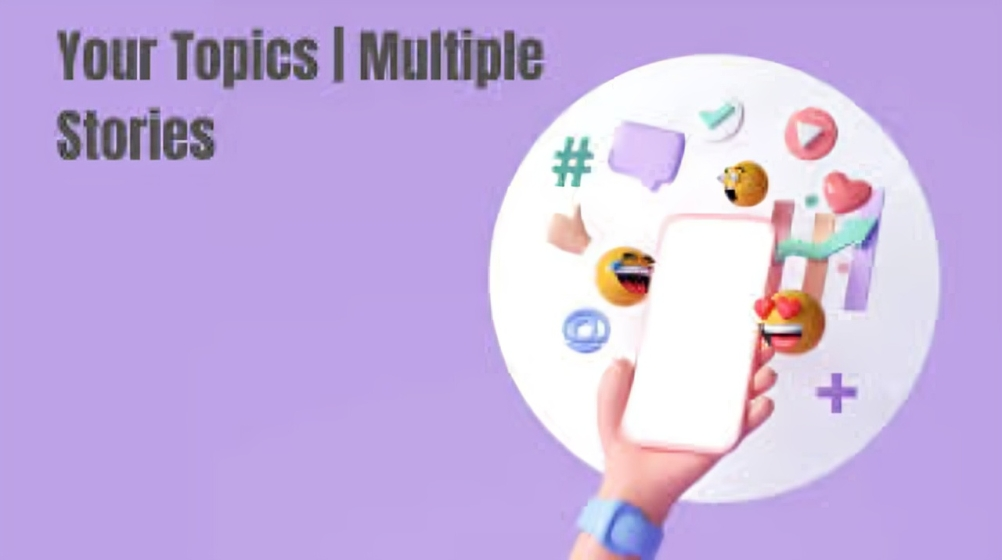
In a world where we are surrounded by information, stories are not just forms of entertainment; they are critical to how we understand the world. “Your Topics | Multiple Stories” is an approach that brings together a variety of narratives, providing multiple perspectives on the same subject. These diverse stories are powerful tools for fostering empathy, enhancing communication, and creating a more inclusive and informed global community. But why does it matter, and how does it affect us? Let’s explore the concept in detail.
What Does “Your Topics | Multiple Stories” Mean?
The phrase “Your Topics | Multiple Stories” refers to presenting a subject through several different narratives, perspectives, and mediums. Instead of just telling a story from one angle, this approach includes various voices and interpretations to create a more comprehensive and inclusive understanding.
For example, a topic like climate change could be explored through scientific data, personal accounts from people directly impacted, artistic expressions like documentaries or poems, and even the voices of activists or business leaders. This approach doesn’t just focus on one view; it brings in various aspects, helping the audience grasp the subject’s complexity.
The key is that the “same topic” can look vastly different depending on the person telling the story, their background, and their experiences. When we embrace multiple stories, we open ourselves to new perspectives, richer conversations, and more in-depth learning.
Why Multiple Stories Matter
Diverse stories help bridge gaps between people with different experiences, opinions, and backgrounds. Here’s why it matters:
-
Broadens Perspective
When we hear different versions of a story, it challenges our assumptions. For instance, reading about an environmental issue from a scientist’s point of view might offer technical insights, while hearing from an activist might emphasize the urgency and human impact. A local community’s story could give us a direct connection to the issue. These varying views broaden our understanding, ensuring we are not limited to a single narrative. -
Encourages Empathy
The act of hearing someone else’s story—especially from a background different from our own—builds empathy. It forces us to step outside our own experiences and understand how others see the world. When we empathize with others, we foster a sense of connectedness and shared humanity. This, in turn, helps in breaking down stereotypes and misconceptions. -
Increases Engagement
People are more likely to engage with stories that resonate with them personally. If a story is told through a medium that speaks to a particular demographic or culture, it has a higher chance of reaching and resonating with that audience. A story about mental health, for example, might be communicated through personal narratives, articles, podcasts, or social media discussions, depending on the audience.
The Importance of Media Diversity
Different forms of media—books, films, television, digital content—serve as excellent vehicles for spreading multiple stories. Here’s how different media can shape how we understand a topic:
-
Literature: Fiction, biographies, and essays offer deep dives into individual experiences, allowing readers to connect with the emotions and struggles of others.
-
Film and Television: Visual storytelling brings diverse narratives to life, making it possible to see the world from multiple perspectives. Films and documentaries are especially powerful in depicting real-life struggles, triumphs, and emotions.
-
Digital Media: With platforms like podcasts, social media, and blogs, voices that were once underrepresented now have a chance to share their stories with global audiences. This democratization of storytelling is vital for inclusive narratives.
As these various media grow in importance, they provide platforms for individuals and communities to tell their stories from their own unique perspectives, further emphasizing the value of multiple narratives.
How Multiple Stories Enhance Global Communication
In today’s globalized world, communication is key. Diverse stories from different corners of the world allow for richer, more effective communication, especially in cross-cultural interactions. Here’s how:
-
Breaking Down Barriers
By exposing ourselves to multiple stories, we begin to understand the shared experiences and values across cultures. This breaks down the walls of ignorance and prejudice, fostering mutual respect and cooperation. -
Amplifying Voices
Historically marginalized communities often have their voices silenced or overlooked. By making space for these stories, we ensure that a wider variety of experiences are heard, enriching global conversations and decision-making processes. -
Fostering Collaboration
When different groups see the value in each other’s stories, they are more likely to collaborate. Shared understanding can lead to shared goals. In the case of environmental issues, for example, understanding how different cultures view the natural world can lead to collaborative solutions.
Personal Growth Through Diverse Stories
Beyond the collective benefits, engaging with multiple stories also promotes personal growth:
-
Building Emotional Intelligence
By listening to and reflecting on the emotions of others, we learn to better understand our own emotions and reactions. -
Improving Communication Skills
By experiencing different types of stories, we learn how to communicate more effectively, tailoring our messages to different audiences. -
Enhancing Creativity
Exposure to different perspectives and narratives can inspire new ideas and solutions to challenges in our personal and professional lives.
Conclusion: The Power of Multiple Stories
“Your Topics | Multiple Stories” is more than just an approach to content creation; it’s a framework for enhancing communication, building empathy, and fostering global understanding. In a world where division and misunderstanding are prevalent, embracing diverse narratives helps unite people, enrich conversations, and inspire change.
So whether you’re a content creator, a consumer of information, or someone seeking personal growth, the power of multiple stories is invaluable. It connects us to one another, helping us understand different perspectives and fostering a deeper sense of shared humanity. By embracing diverse voices and stories, we make the world a more inclusive and empathetic place for everyone.